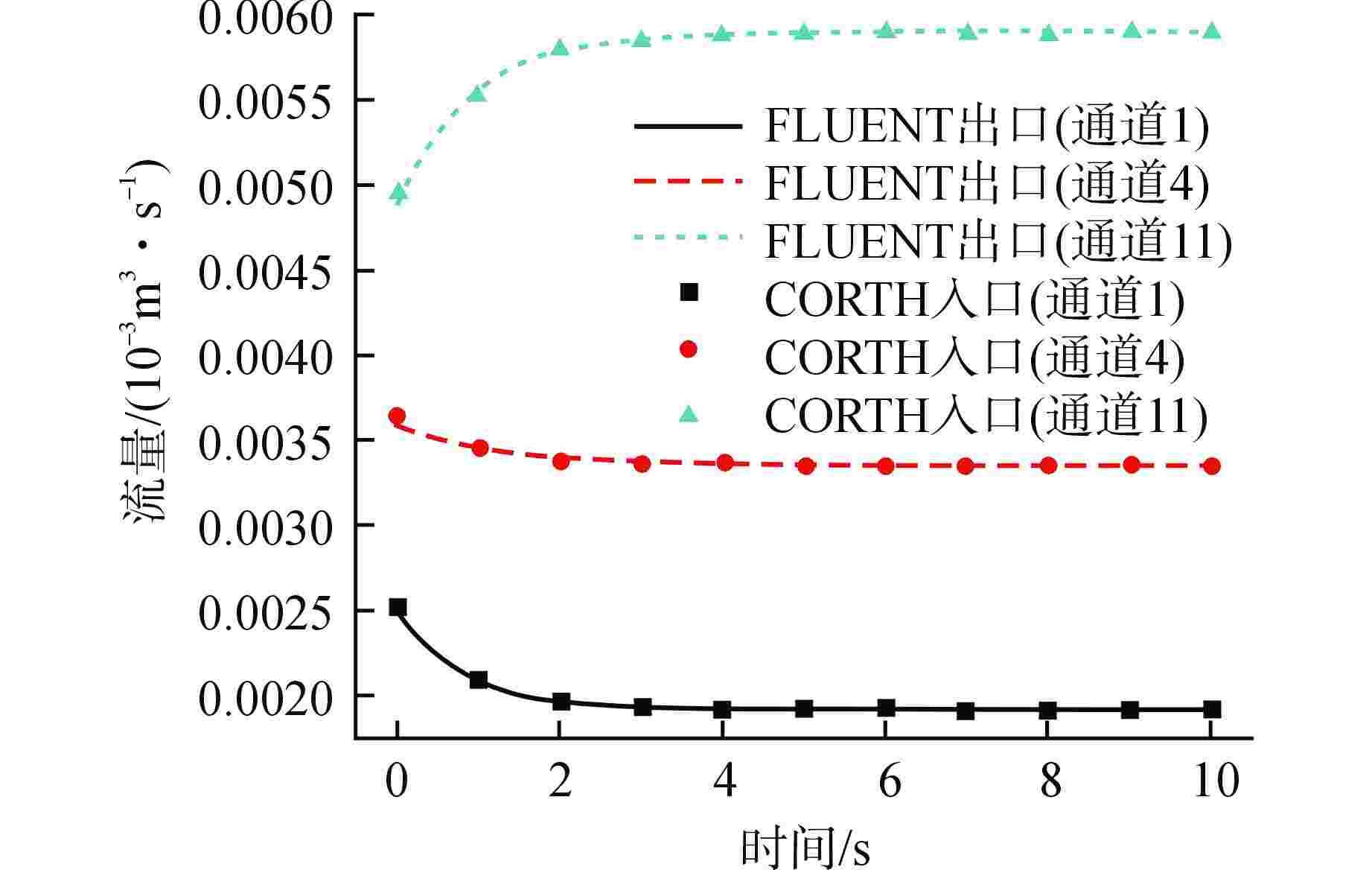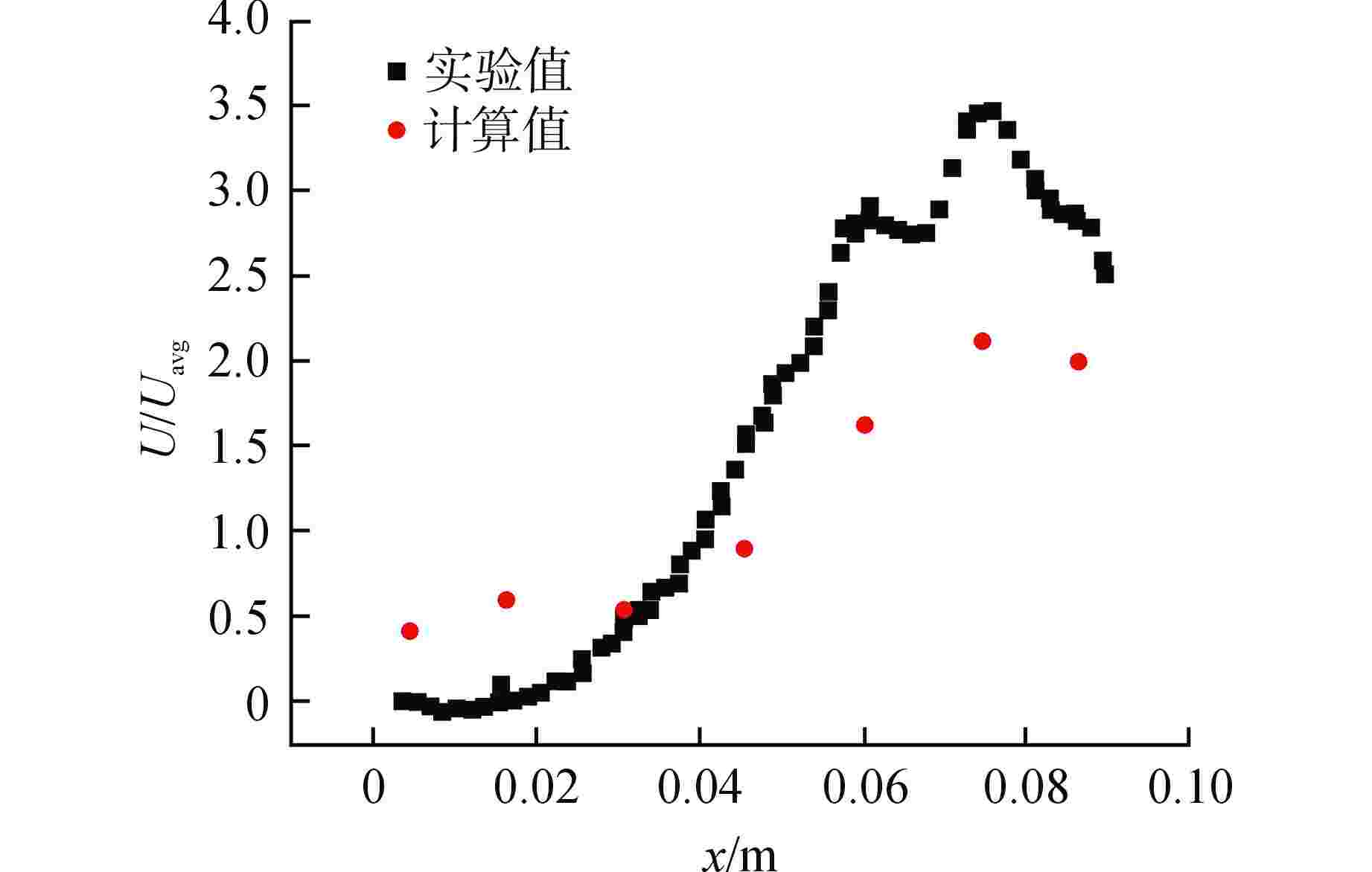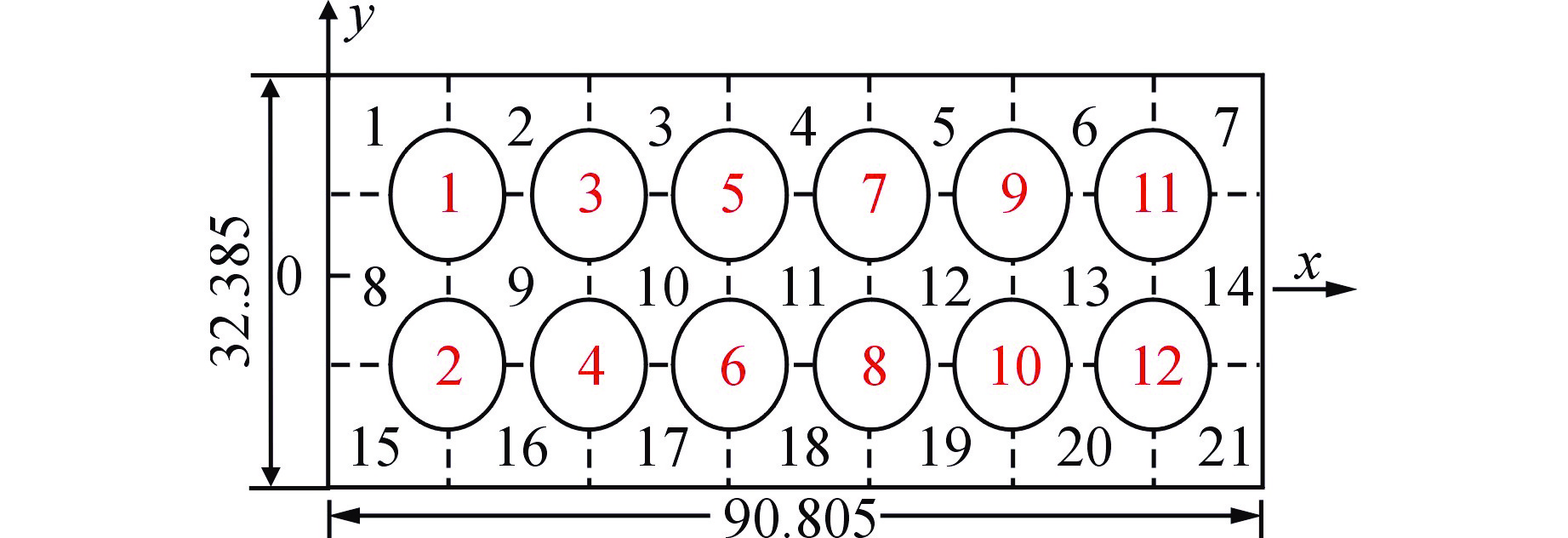Research on Multi-scale Coupling Simulation of Rod Bundle Channels Based on Subchannel-CFD Coupling Code
-
摘要: 利用子通道程序进行堆芯热工水力分析时需要给定实时变化的堆芯入口状态参数等信息,而计算流体动力学(CFD)程序能够计算堆芯入口精细热工水力参数。因此本文通过内部耦合策略,基于动态链接库技术实现子通道程序CORTH与CFD程序FLUENT的多尺度耦合程序开发,并针对PNL 2×6基准题实验工况进行模拟计算,其中FLUENT程序计算实验入口区域,为CORTH程序提供准确的入口流量分布,而CORTH程序用于计算模拟加热段。结果表明,多尺度耦合程序能够实现子通道程序与CFD程序的热工参数信息实时传递,并且模拟计算结果与实验结果符合良好。
-
关键词:
- 子通道程序 /
- 计算流体动力学(CFD)程序 /
- 多尺度耦合 /
- PNL 2×6
Abstract: When the subchannel code is used for core thermal hydraulic analysis, it is necessary to give the real-time information such as the state parameters of the core inlet, and the computational fluid dynamics (CFD) code can calculate the fine thermal hydraulic parameters of the core inlet. In this paper, the subchannel code CORTH is explicitly coupled with the CFD code FLUENT by means of internal coupling method and dynamic link library technology. The coupling code is further used to simulate the experimental conditions of PNL 2×6 benchmark problem, in which FLUENT calculates the inlet section to provide accurate inlet flow distribution for CORTH, while CORTH calculates the simulated heating section. The results show that the multi-scale coupling code can realize the real-time transmission of thermal parameter information between sub-channel code and CFD code, and the simulation results are in good agreement with the experimental results. -
表 1 PNL 2×6 部分实验工况
Table 1. Partial Experimental Cases for PNL 2×6
工况 初始流量/
(10−5 m3·s−1)最终流量/
(10−5 m3·s−1)瞬态时间/s 加热棒高
功率/kW加热棒低
功率/kW1 7.89 7.89 0 0 0 2 7.89 7.89 0 0.91 0 3 19.43 19.43 0 0 0 4 19.43 19.43 0 0.91 0.91 5 19.43 6.81 150 0 0 6 19.43 6.81 150 0.91 0 7 19.43 6.81 45 0 0 8 19.43 6.81 45 0.91 0 9 19.43 19.43 0 0.91 0 10 6.81 6.81 0 0 0 11 6.81 6.81 0 0.91 0 -
[1] 田文喜,王明军,秋穗正,等. 基于CFD方法的核动力系统热工安全特性研究进展[J]. 原子能科学技术,2019, 53(10): 1968-1982. doi: 10.7538/yzk.2019.youxian.0351 [2] WANG M J, WANG Y J, TIAN W X, et al. Recent progress of CFD applications in PWR thermal hydraulics study and future directions[J]. Annals of Nuclear Energy, 2021, 150: 107836. doi: 10.1016/j.anucene.2020.107836 [3] ZHANG K L. The multiscale thermal‐hydraulic simulation for nuclear reactors: A classification of the coupling approaches and a review of the coupled codes[J]. International Journal of Energy Research, 2020, 44(5): 3295-3315. doi: 10.1002/er.5111 [4] LONG J P, ZHANG B, YANG B W, et al. Review of researches on coupled system and CFD codes[J]. Nuclear Engineering and Technology, 2021, 53(9): 2775-2787. doi: 10.1016/j.net.2021.03.027 [5] YE L R, YU H, WANG M J, et al. CFD/RELAP5 coupling analysis of the ISP No. 43 boron dilution experiment[J]. Nuclear Engineering and Technology, 2022, 54(1): 97-109. doi: 10.1016/j.net.2021.07.047 [6] 刘余,张虹,贾宝山. 核反应堆热工水力多尺度耦合模拟初步研究[J]. 核动力工程,2010, 31(S1): 11-15. [7] 贾斌,马帅,史强,等. 非能动压水堆热工水力多尺度耦合计算分析研究[J]. 核科学与工程,2018, 38(5): 763-773. doi: 10.3969/j.issn.0258-0918.2018.05.006 [8] 桂民洋,田文喜,吴迪,等. 子通道程序与CFD程序的耦合方法研究[J]. 原子能科学技术,2018, 52(11): 1962-1967. doi: 10.7538/yzk.2018.youxian.0262 [9] WANG C, CAO L K, ZHANG X B, et al. Development and application of CFD and subchannel coupling analysis code for lead-cooled fast reactor[J]. International Journal of Energy Research, 2019, 43(14): 8447-8462. [10] ZHANG X L, ZHANG K L, SANCHEZ-ESPINOZA V H, et al. Multi-scale coupling of CFD code and sub-channel code based on a generic coupling architecture[J]. Annals of Nuclear Energy, 2020, 141: 107353. doi: 10.1016/j.anucene.2020.107353 [11] QUIGLEY M S, MCMONAGLE C A, BATES J M. Investigation of combined free and forced convection in a 2 x 6 rod bundle: BNWL-2216[R]. Richland: Battelle Pacific Northwest Laboratory, 1977: 1-83. [12] BATES J M, KHAN E U. Investigation of combined free and forced convection in a 2×6 rod bundle during controlled flow transients: PNL-3135[R]. Richland: Battelle Pacific Northwest Laboratory, 1980: 1-161. -






 下载:
下载:








